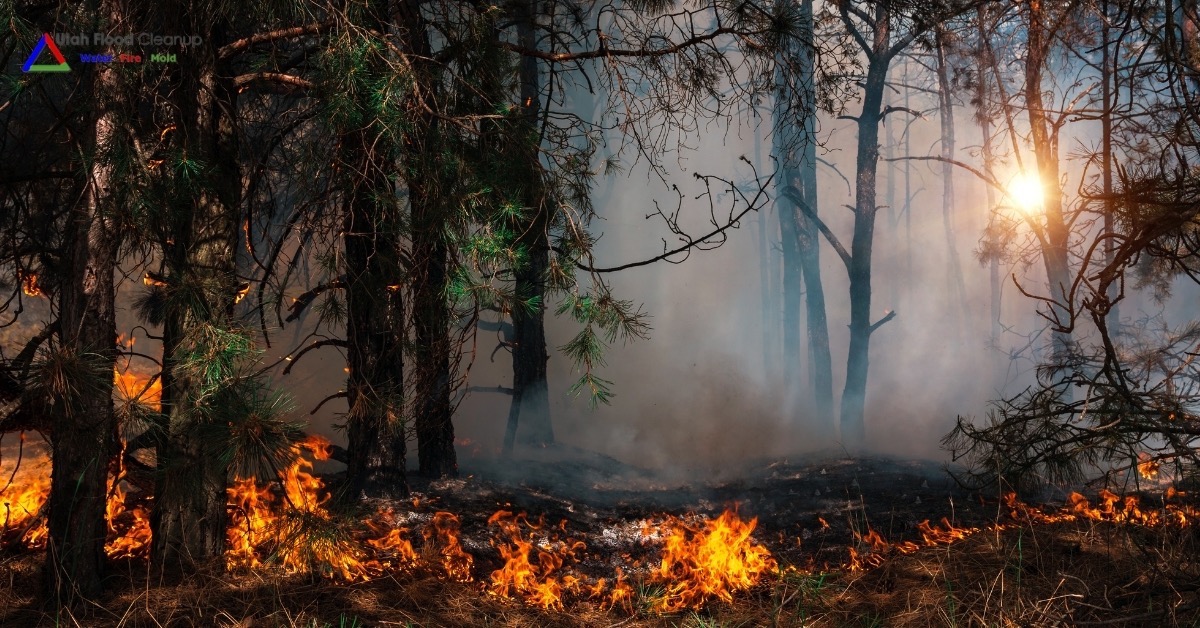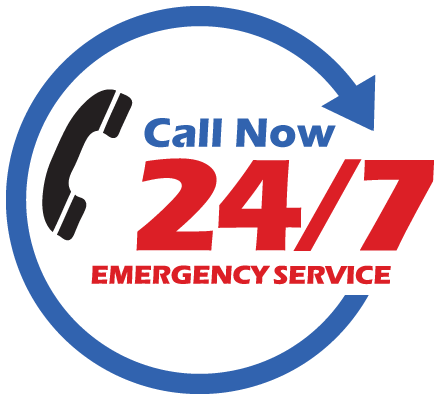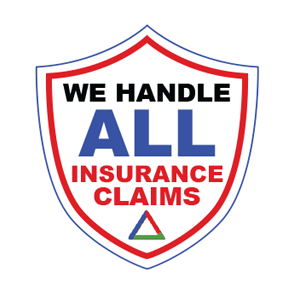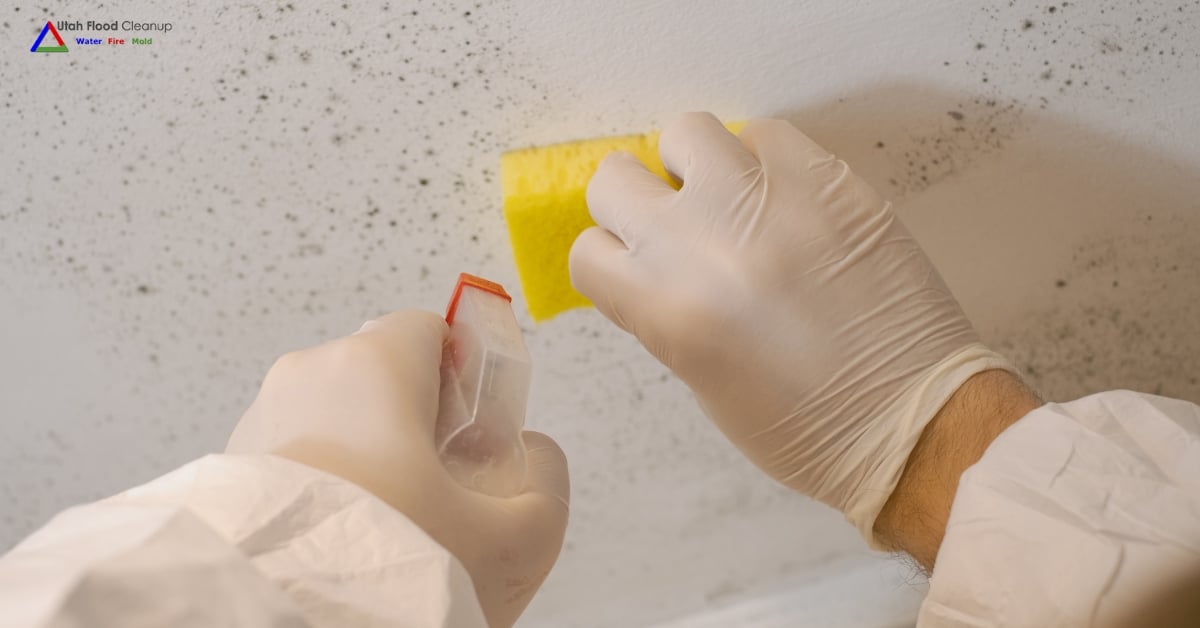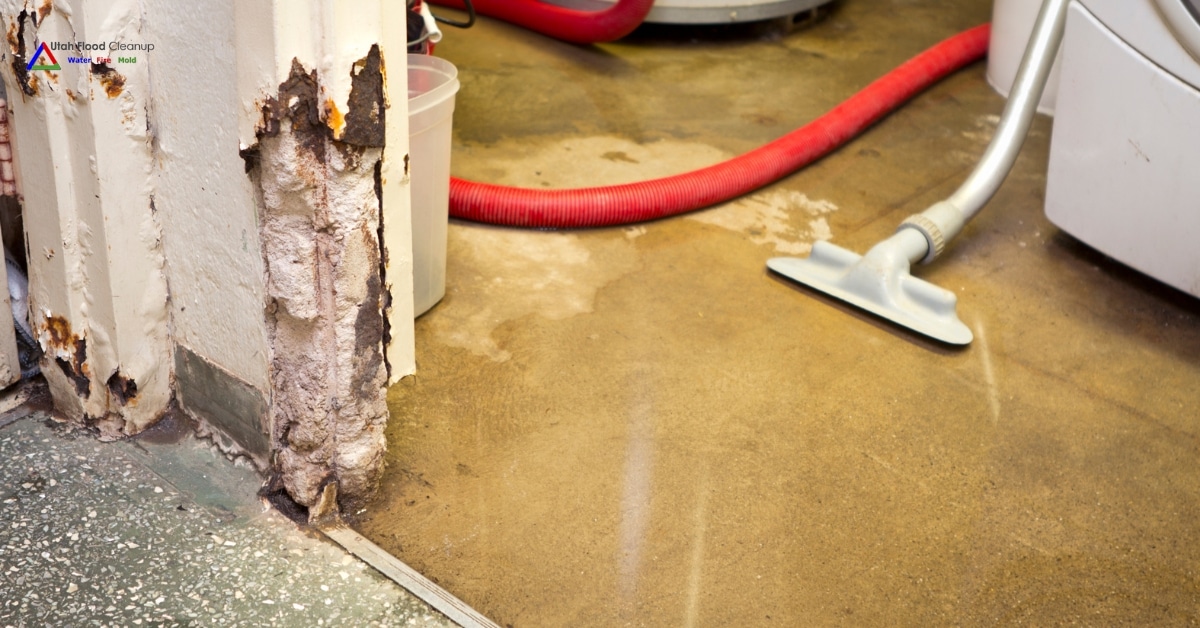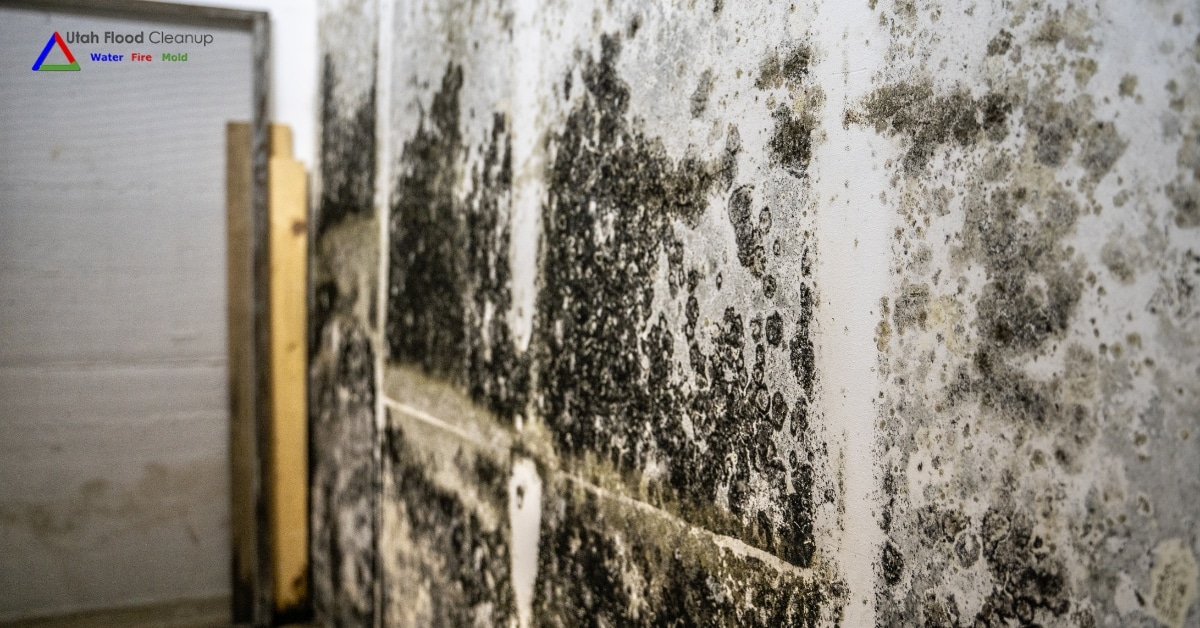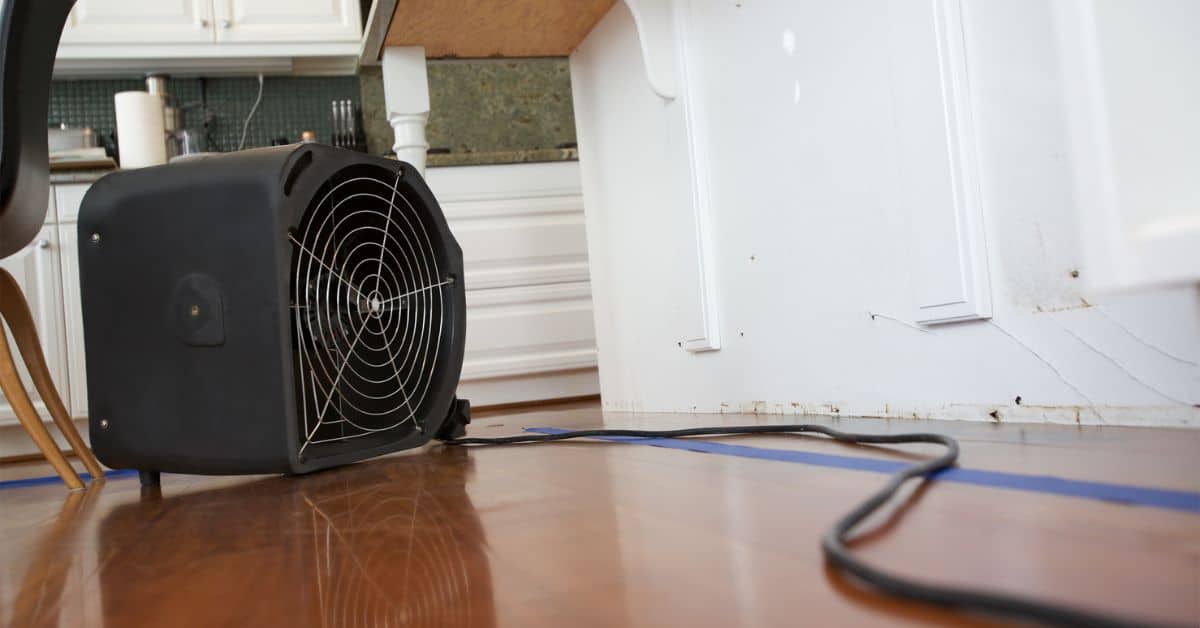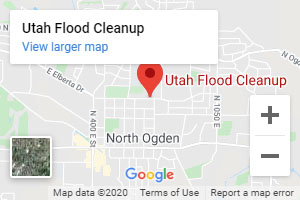In this blog, we will discuss:
- Wildfire Awareness Month
- Make a Household Emergency Plan
- Have Emergency Supplies Ready
- Be Aware of Public Warnings and Emergency Alerts
- Practice Your Evacuation Procedure
- Evacuate Immediately When Ordered by Authorities!
- Make Your Home More Fire Resistant
- Reacting During a Wildfire in Your Area
- Medical Emergency During a Wildfire Alert Period!
- Disaster Cleanup Company in Utah
Every year, numerous wildfires decimate thousands of acres of forest lands throughout the country. Prairies and grasslands are sometimes affected by these unexpected and dangerous fires too. By late September of 2020, Utah’s total number of wildfires increased by 50% from the previous year, with more than 1,300 fires in the state during the five months from April through mid-September.
A wildfire may spread very quickly and can devastate wildlife populations, forested areas, and developed communities. In observation of 2021 Wildfire Awareness Month, here is some information to help you prepare to take the necessary actions to protect yourself, your family, and your home in the event that a wildfire occurs near your neighborhood.
Make a Household Emergency Plan
First, draft an emergency plan for use by all the occupants of your home in the event that a wildfire is moving toward your neighborhood. Ensure that everyone clearly understands what they should do if it becomes necessary to evacuate quickly during a wildfire threatening your area.
A top priority in your emergency plan should be to consolidate your important documents into a single durable and secure folder. Include insurance policies, IDs, essential legal and financial records, etc. Create a backup for the folder by copying all the documents to a digital storage space with secure password protection. Put the documents in your evacuation pack. Each family member should have a packed bag ready for emergency evacuation.
Have Emergency Supplies Ready
Keep enough evacuation supplies in stock at home. Include medication, disinfectant supplies, masks, pet supplies, at least a few clothing changes in your go-bag or car trunk. Be prepared to handle smaller medical issues that arise at home. This will help lessen the surge of emergency medical needs that overwhelm hospitals and private care physicians during widespread emergencies.
Staying prepared in advance enables you to manage minor medical needs at home and avoid unnecessary trips to overburdened urgent care facilities and hospital emergency rooms during a public crisis.
Keep an N95 respirator in your emergency supplies to filter out particles from smoke in the air. you breathe. (Surgical masks, cloth masks, and dust masks help protect against exposure to COVID-19, but these mask types cannot protect you from smoke inhalation.)
Be Aware of Public Warnings and Emergency Alerts
Follow all instructions provided by disaster management officials in emergency alerts. Make sure your cell phone is charged continuously while wildfires could be moving into your area. Buy backup charging devices for powering electronic devices. To receive wildfire alerts, you can:
- Receive weather alerts in real-time from the National Weather Service. Download the app from FEMA. Get reporting for up to 5 locations anywhere in the United States.
- Receive alerts from the Salt Lake City Emergency Alert System (EAS). Or, search online for your county or municipal government’s EAS web location for wildfire tracking information and local emergency alerts. Register in your community to get reports for your area. Get alerts from Wireless Emergency Alert (WEA). No registration is required.
Practice Your Evacuation Procedure
When a wildfire is spreading near your neighborhood, it may become necessary to evacuate very quickly. Familiarize yourself and everyone in your home with your evacuation routes. Have evacuation packs for everyone in the home ready before time is drawing near for evacuation. Practice your evacuation plan together periodically.
In your practice evacuation include:
- Preparing and removing your pets
- Gathering essential items to take with you
- Turning off breakers, gas, etc.
- Making other preparations in and around your home
- Departing via the designated evacuation route
- Checking the evacuation checklist before evacuating
- Communicating, task delegation, etc.
Create contingency plans to allow for unexpected needs for changes to the primary plan, for example, if one or more family members are away from home or even out of town when it’s time to evacuate.
During the current COVID-19 conditions, if you need to go to a public shelter, bring protective masks, hand sanitizer, and disinfectant, if possible, to help protect yourself and others. (Children under age 2 and people with respiratory difficulties should not wear masks.) Read the CDC guidelines for instructions on Going to a Public Disaster Shelter During the COVID-19 Pandemic. Maintain social distancing in the shelter.
Evacuate Immediately When Ordered by Authorities!
COVID-19 may be causing reduced space in public shelters around your area during a wildfire emergency. Further, due to the virus, the public cleaner air shelters you might normally rely on in a wildfire emergency may not be open or may not be as safe as it would be if the virus were not a public health factor at this time.
Check the latest information provided by your local emergency management authorities to find out which public shelters are recommended for your area. See the Red Cross Shelters List or the Find Open Shelters site for available open shelters in your area, or use the Red Cross Emergency Shelters Map for quick reference.
- If possible, plan to shelter with family or friends instead of a public shelter to help relieve pressure on the public facilities and be more comfortable and potentially safer.
- If authorities do not order you to evacuate, but if there is smoke in the air in your neighborhood, stay inside your home in a pre-selected safe location. Close the room off and use a portable air filter or cleaner to keep the interior air clean, even while the other rooms and outdoor air is smokey.
Make Your Home More Fire Resistant
In non-emergency periods, incorporate fire-resistant building materials into your home when possible, per FEMA recommendations. Include fire-retardant finishing, and decorating materials, when making repairs or renovations. Maintain enough length of water hose to reach any area of your property within proximity to your home that puts it at risk in case of wildfire. Create a zone that is empty of leaves or other landscape debris, or other flammable matter for a minimum of around 30 feet from your house.
During a wildfire emergency, designate one room that you can close off from the external air. Close and seal bottoms of interior doors to the room. Use a portable air cleaning machine to reduce indoor pollution during conditions of the smoke-filled air outside.
If you are not ordered to evacuate, there is smoke in the air in your neighborhood, shelter in place in this room. Diligently keep checking for instructions from Utah wildfire disaster management authorities in your area and maintain readiness to evacuate.
Reacting During a Wildfire in Your Area
Remember that it is normal to find yourself feeling stressed or anxious during an emergency situation like having a wildfire spreading in your area. To help protect your safety and health and your family’s safety, speak to someone about your difficulty. If you find that you are feeling too upset or are struggling to remain calm and function effectively, ask for help.
Many people may be feeling anxiety and fear about COVID-19. Adding worry about a wildfire can mean an even much more stressful situation. Follow the CDC’s recommendations for managing your stress and helping others in your group deal with the traumatic event of the wildfire evacuation and COVID-19. See detailed advice from the U.S. government for returning to your home after a wildfire.
Medical Emergency During a Wildfire Alert Period!
During a wildfire evacuation or period of sheltering in place, pay attention to your own and others’ health signs and symptoms. If someone has asthma, COPD, or heart health issues, or other health concerns, or is pregnant, be aware of apparent changes in their condition. If you or someone else is sick and in need of medical attention, contact the appropriate healthcare provider for instructions and, if possible, shelter in place.
If you or someone near you has a medical emergency, call 911 immediately. If possible, put on a mask before emergency responders arrive. If you are staying in a shelter or public evacuation facility, alert the staff in charge immediately of the need for emergency help so that they can contact the nearest available hospital or clinic.
Utah Flood Cleanup, North Ogden Utah
We are a disaster cleanup company in Utah, specializing in flood, mold, and fire damage restoration service Utah property owners have relied on since 1992. Utah Flood Cleanup is a locally owned disaster restoration service working directly for the customer instead of the insurance company. Because we are the advocate for our customers, we can do our fire restoration work to industry standards, never cutting corners and sacrificing quality to save hours or other necessary costs. We strictly adhere to IICRC S-500 and S-520 guidelines. Our professional disaster cleanup team members hold an abundance of industry certifications, licenses, affiliations, awards. We are a 24/7 emergency disaster clean-up service with a 1-hour response time. Financing options are available.
If a wildfire or other disaster has impacted your home or business, call Utah Flood Cleanup at 801-416-2666 for emergency cleanup services, or contact us online for an onsite damage inspection.
Latest posts by Utah Flood Cleanup (see all)
- Water Damage and Mold Growth: Understanding the Connection - November 19, 2024
- 7 Essential Steps in the Repair of Water Damaged Ceiling by Experts - November 14, 2024
- Top 7 Tips for Successful Mold Removal in Utah - October 9, 2024
